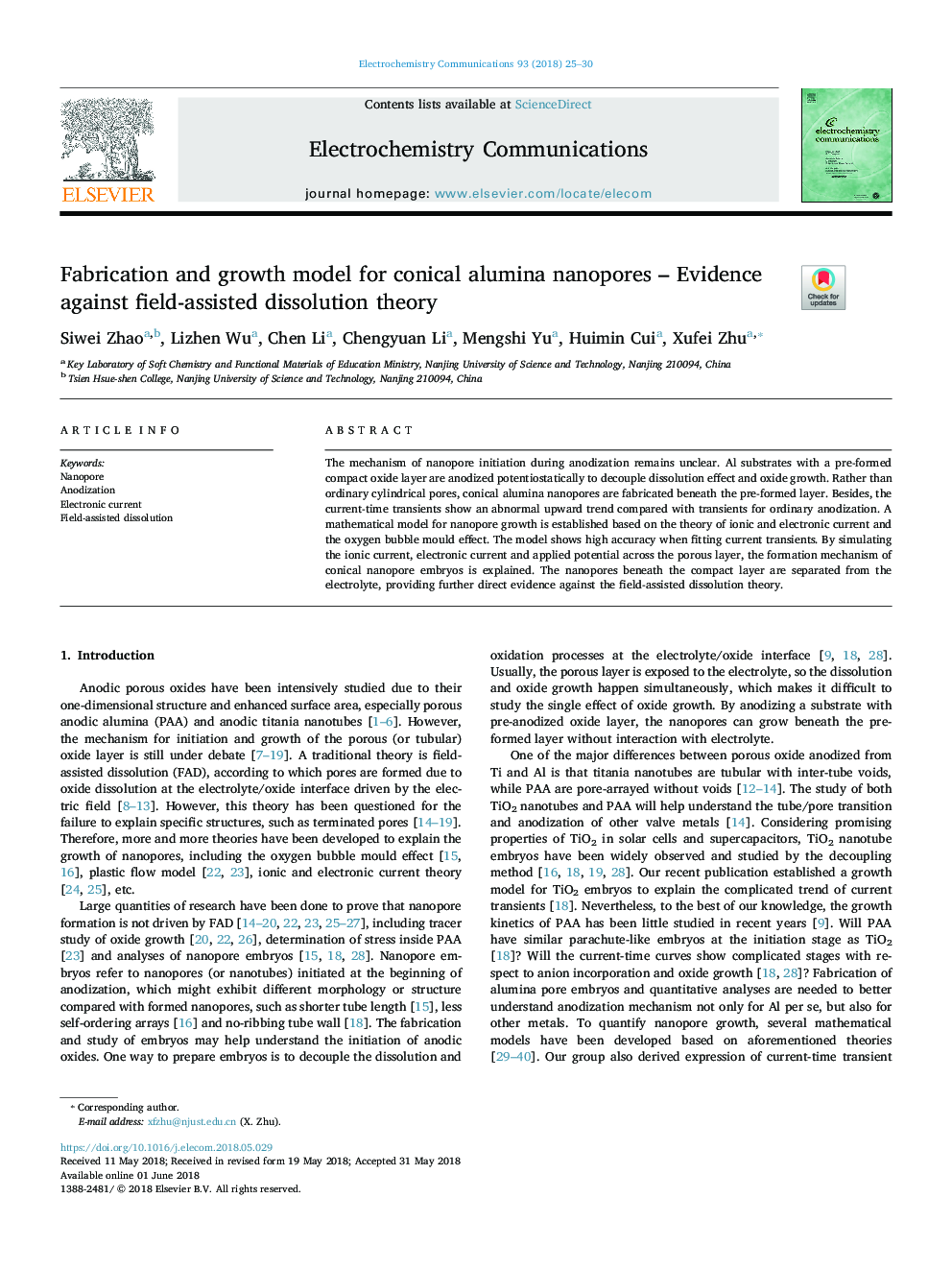| Article ID | Journal | Published Year | Pages | File Type |
|---|---|---|---|---|
| 6600636 | Electrochemistry Communications | 2018 | 6 Pages |
Abstract
The mechanism of nanopore initiation during anodization remains unclear. Al substrates with a pre-formed compact oxide layer are anodized potentiostatically to decouple dissolution effect and oxide growth. Rather than ordinary cylindrical pores, conical alumina nanopores are fabricated beneath the pre-formed layer. Besides, the current-time transients show an abnormal upward trend compared with transients for ordinary anodization. A mathematical model for nanopore growth is established based on the theory of ionic and electronic current and the oxygen bubble mould effect. The model shows high accuracy when fitting current transients. By simulating the ionic current, electronic current and applied potential across the porous layer, the formation mechanism of conical nanopore embryos is explained. The nanopores beneath the compact layer are separated from the electrolyte, providing further direct evidence against the field-assisted dissolution theory.
Related Topics
Physical Sciences and Engineering
Chemical Engineering
Chemical Engineering (General)
Authors
Siwei Zhao, Lizhen Wu, Chen Li, Chengyuan Li, Mengshi Yu, Huimin Cui, Xufei Zhu,
